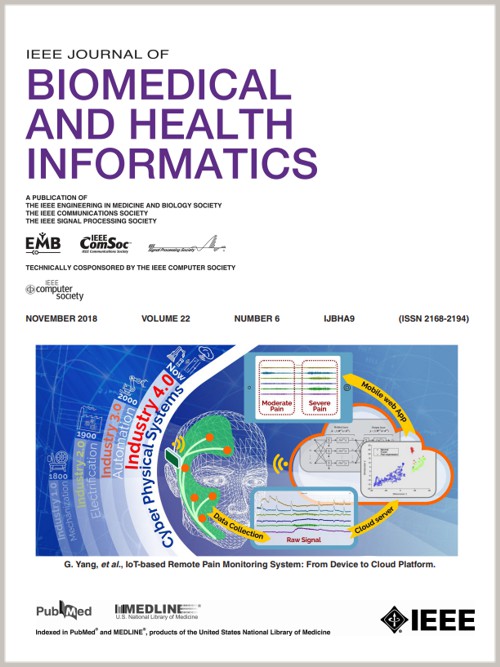FEFA: Frequency Enhanced Multi-Modal MRI Reconstruction With Deep Feature Alignment
IF 6.8
2区 医学
Q1 COMPUTER SCIENCE, INFORMATION SYSTEMS
IEEE Journal of Biomedical and Health Informatics
Pub Date : 2024-07-23
DOI:10.1109/JBHI.2024.3432139
引用次数: 0
Abstract
Integrating complementary information from multiple magnetic resonance imaging (MRI) modalities is often necessary to make accurate and reliable diagnostic decisions. However, the different acquisition speeds of these modalities mean that obtaining information can be time consuming and require significant effort. Reference-based MRI reconstruction aims to accelerate slower, under-sampled imaging modalities, such as T2-modality, by utilizing redundant information from faster, fully sampled modalities, such as T1-modality. Unfortunately, spatial misalignment between different modalities often negatively impacts the final results. To address this issue, we propose FEFA, which consists of cascading FEFA blocks. The FEFA block first aligns and fuses the two modalities at the feature level. The combined features are then filtered in the frequency domain to enhance the important features while simultaneously suppressing the less essential ones, thereby ensuring accurate reconstruction. Furthermore, we emphasize the advantages of combining the reconstruction results from multiple cascaded blocks, which also contributes to stabilizing the training process. Compared to existing registration-then-reconstruction and cross-attention-based approaches, our method is end-to-end trainable without requiring additional supervision, extensive parameters, or heavy computation. Experiments on the public fastMRI, IXI and in-house datasets demonstrate that our approach is effective across various under-sampling patterns and ratios.FEFA:频率增强型多模态磁共振成像重构与深度特征对齐。
要做出准确可靠的诊断决定,往往需要整合多种磁共振成像(MRI)模式的互补信息。然而,这些模式的采集速度不同,这意味着获取信息可能需要耗费大量时间和精力。基于参考的磁共振成像重建旨在通过利用较快、完全采样模式(如 T1 模式)的冗余信息来加速较慢、采样不足的成像模式(如 T2 模式)。遗憾的是,不同模式之间的空间错位往往会对最终结果产生负面影响。为了解决这个问题,我们提出了 FEFA,它由级联的 FEFA 块组成。FEFA 模块首先在特征层对齐和融合两种模态。然后对合并后的特征进行频域滤波,以增强重要特征,同时抑制次要特征,从而确保重建的准确性。此外,我们还强调了结合多个级联块重建结果的优势,这也有助于稳定训练过程。与现有的 "注册-重建 "和基于交叉注意的方法相比,我们的方法是端到端可训练的,不需要额外的监督、大量的参数或繁重的计算。在公共 fastMRI、IXI 和内部数据集上的实验表明,我们的方法在各种采样不足模式和比例下都很有效。我们的代码可在以下网址获取:https://github.com/chenxm12394/FEFA。
本文章由计算机程序翻译,如有差异,请以英文原文为准。
求助全文
约1分钟内获得全文
求助全文
来源期刊

IEEE Journal of Biomedical and Health Informatics
COMPUTER SCIENCE, INFORMATION SYSTEMS-COMPUTER SCIENCE, INTERDISCIPLINARY APPLICATIONS
CiteScore
13.60
自引率
6.50%
发文量
1151
期刊介绍:
IEEE Journal of Biomedical and Health Informatics publishes original papers presenting recent advances where information and communication technologies intersect with health, healthcare, life sciences, and biomedicine. Topics include acquisition, transmission, storage, retrieval, management, and analysis of biomedical and health information. The journal covers applications of information technologies in healthcare, patient monitoring, preventive care, early disease diagnosis, therapy discovery, and personalized treatment protocols. It explores electronic medical and health records, clinical information systems, decision support systems, medical and biological imaging informatics, wearable systems, body area/sensor networks, and more. Integration-related topics like interoperability, evidence-based medicine, and secure patient data are also addressed.
 求助内容:
求助内容: 应助结果提醒方式:
应助结果提醒方式:


